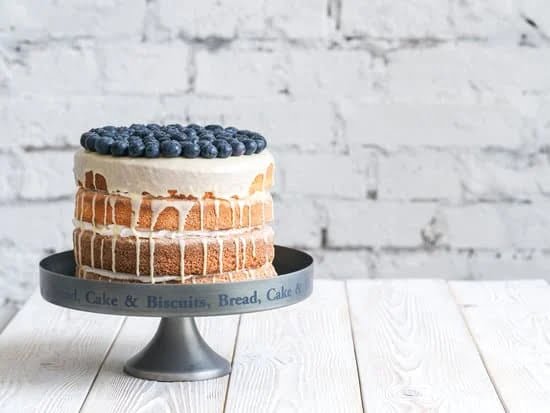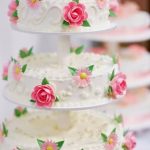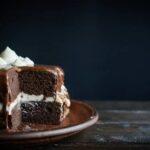The art of decorating sponge cakes goes beyond just creating delicious treats; it is about turning a simple cake into a visually stunning masterpiece. With the right techniques and tools, you can transform a plain sponge cake into an edible work of art that delights both the eyes and the taste buds.
Sponge cakes are the ideal canvas for decoration due to their light and fluffy texture. Unlike denser cakes, they provide a soft and airy base that allows for intricate designs without overpowering the flavors. Whether you are a beginner or an experienced baker, working with sponge cakes offers endless possibilities for creativity and experimentation.
Creating visually stunning desserts brings joy and satisfaction to both the creator and those who get to enjoy them. There is something incredibly fulfilling about seeing your handiwork come to life and witnessing the delight on people’s faces as they admire your creations. The process of decorating sponge cakes allows you to showcase your artistic flair and culinary skills in a truly delectable way.
In this article, we will explore the art of decorating sponge cakes from start to finish. We will begin by discussing the essential tools and ingredients needed for successful cake decoration. Then, we will guide you through preparing the perfect sponge cake base, teaching you useful tips along the way. Next, we will delve into mastering buttercream icing techniques and elevating your decorations with fondant.
Join us on this delightful journey as we share step-by-step instructions, proven techniques, unique ideas, troubleshooting tips, and more in our quest to help you become a master at decorating sponge cakes. So grab your apron, mixers, piping bags, stencils – let’s get started.
Essential Tools and Ingredients for Sponge Cake Decorating
To successfully decorate a sponge cake, it is important to have the right tools and ingredients on hand. These essential items will not only make the decorating process easier, but also help you achieve professional-looking results. Here are some must-have tools for cake decorating:
Piping Bags and Tips
Piping bags are essential for creating intricate designs on your sponge cake. Look for reusable bags made of durable materials that can withstand pressure. Additionally, invest in a variety of piping tips to achieve different shapes and patterns such as stars, flowers, or rosettes.
Offset Spatula
An offset spatula is a versatile tool for spreading frosting or icing onto your sponge cake. Its angled blade allows for smooth and even application without disturbing the surface of the cake.
Fondant Smoother
If you plan on working with fondant, a fondant smoother is a must-have tool. This hand-held device helps smooth out any wrinkles or imperfections in the fondant, giving your cake a polished finish.
Cake Turntable
A turntable makes it easier to decorate all sides of your sponge cake evenly without having to constantly lift and rotate it yourself. Look for one with a non-slip base and smooth rotation for optimal control.
Along with the right tools, having high-quality ingredients is key to creating a delicious and visually appealing sponge cake. Here are some key ingredients that should be part of your sponge cake recipe:
Cake Flour
Cake flour has less protein content compared to all-purpose flour, resulting in a lighter and more tender texture for your sponge cake.
High-Quality Butter
Using unsalted butter made from high-quality cream will enhance the flavor of your sponge cake. Make sure the butter is at room temperature before incorporating it into your recipe.
Granulated Sugar
Granulated sugar provides sweetness and structure to your sponge cake. It helps create a light and airy texture while ensuring that the cake holds its shape when decorating.
Pure Vanilla Extract
Vanilla extract adds a distinct flavor to your sponge cake. Look for pure vanilla extract rather than imitation for the best taste.
By having these essential tools and ingredients in your kitchen, you will be well-equipped to create beautifully decorated sponge cakes with ease.
Preparing the Perfect Sponge Cake Base
When it comes to decorating sponge cakes, having a light and fluffy base is essential. The texture of a sponge cake provides the perfect canvas for decorations to shine, allowing intricate designs to stand out. In this section, we will explore tips for choosing the right sponge cake recipe and provide step-by-step instructions for baking a sponge cake that serves as a sturdy foundation for your beautiful creations.
Tips for choosing the right sponge cake recipe
- Consider the flavor: Think about what flavors will complement your decorations. Whether you prefer classic vanilla or want to experiment with unique flavor combinations like chocolate-orange or lemon-raspberry, choose a recipe that enhances your overall vision.
- Look for moisture: A moist sponge cake ensures that your decorations stay intact without compromising on taste. Look for recipes that incorporate ingredients like buttermilk or sour cream to achieve this desired texture.
- Consider the density: The density of your sponge cake will affect how well it holds up under the weight of decorations. For intricate designs, look for recipes that create a lighter and more airy texture.
- Testimonials and reviews: Before selecting a recipe, read reviews from other bakers who have tried it out. Their experiences and suggestions can help guide you towards reliable and successful results.
Step-by-step instructions for baking a light and fluffy sponge cake
- Gather your ingredients: For a basic sponge cake, you will need all-purpose flour, baking powder, salt, unsalted butter, sugar, eggs, vanilla extract (or flavoring of choice), and milk.
- Prepare your pans: Grease your baking pans and line them with parchment paper to ensure easy removal after baking.
- Preheat your oven: Preheat your oven to the temperature specified in the recipe.
- Sift dry ingredients: In a medium-sized bowl, whisk together the flour, baking powder, and salt. Sifting will help incorporate air into the dry mixture for a lighter texture.
- Cream butter and sugar: In a large bowl, beat the butter and sugar together until light and creamy. This process helps to aerate the batter, resulting in a lighter cake.
- Add eggs: Add the eggs one at a time, beating well after each addition. Be sure to scrape down the sides of the bowl to ensure everything is fully incorporated.
- Incorporate dry ingredients: Gradually add the sifted dry ingredients to the wet mixture, alternating with the milk. Begin and end with the dry ingredients, mixing until just combined after each addition.
- Pour batter into pans: Divide the batter evenly between your prepared pans. Smooth out the tops with a spatula.
- Bake and cool: Place your pans in the preheated oven and bake according to the recipe’s instructions. Once baked, allow your sponge cakes to cool completely before removing them from the pans.
By following these tips and step-by-step instructions, you can create a perfect sponge cake base that sets the stage for your decorative endeavors. With a solid foundation in place, you’ll be ready to move on to mastering buttercream icing in the next section of this article.
Mastering the Art of Buttercream Icing
Different types of buttercream icing for sponge cakes
Buttercream icing is a classic choice for decorating sponge cakes due to its smooth and creamy texture. There are several different types of buttercream icing that you can use to elevate the taste and appearance of your cake.
One popular type is Swiss meringue buttercream, which is made by heating egg whites and sugar together before whipping in butter. This results in a light and airy frosting that is perfect for creating intricate design work on your sponge cake.
Another option is American buttercream, which is made using powdered sugar, butter, milk, and flavorings such as vanilla extract. American buttercream is sweeter and thicker than Swiss meringue buttercream, making it ideal for creating bold colors and piped borders on your cake.
If you’re looking for a dairy-free option, vegan buttercream can be a great choice. It typically uses vegetable shortening or vegan margarine instead of dairy-based butter. Vegan buttercream can be just as delicious as traditional versions and can be flavored with various extracts or even fruit purees to add an extra layer of flavor to your sponge cake.
Proven techniques for achieving a smooth and creamy consistency
Achieving the right consistency for your buttercream icing is crucial for successful cake decoration. Here are some proven techniques to help you achieve a smooth and creamy texture:
- Start with softened butter: It’s important to use softened, room temperature butter when making your buttercream icing. This will ensure that it incorporates smoothly into the other ingredients without any lumps.
- Sift the powdered sugar: Sifting the powdered sugar before adding it to the mixture will help prevent lumps in your icing. This step ensures that the sugar blends properly with the other ingredients, resulting in a smoother texture.
- Gradually add liquid: Whether you’re using milk, cream, or another liquid, it’s best to add it gradually. Slowly incorporate the liquid into the buttercream mixture while mixing on low speed. This will help you control the consistency and avoid adding too much liquid at once.
- Beat until light and fluffy: Once all the ingredients are combined, continue beating the buttercream on medium to high speed until it becomes light and fluffy. This can take several minutes, so be patient. The beating process helps incorporate air into the buttercream, giving it a lighter texture.
By mastering these techniques and experimenting with different flavors and colors, you can create buttercream icing that not only looks beautiful but also tastes delicious on your sponge cake.
Elevating Your Decorations with Fondant
Fondant has become a popular choice among bakers and cake decorators for its versatility and smooth finish. It is a pliable icing made from sugar, water, and flavorings that can be rolled out and draped over cakes to create a sleek, polished look. In this section, we will explore the benefits of using fondant in sponge cake decoration and provide step-by-step instructions on how to work with fondant.
Introduction to Fondant
Fondant offers several advantages when it comes to decorating sponge cakes. Firstly, it provides a clean canvas for your designs, as it creates a smooth surface that is ideal for intricate decorations. Fondant also allows you to achieve vibrant colors since it can be tinted with food coloring. Furthermore, using fondant gives your cakes a professional appearance, making them look like they belong in a bakery or pastry shop.
To work with fondant successfully, you will need a few essential tools. Rolling pins are necessary for rolling out the fondant to the desired thickness. A sharp knife or pizza cutter is crucial for trimming the excess fondant after draping it over the cake. Additionally, you will need some cornstarch or powdered sugar to dust your work surface and prevent sticking.
Step-by-Step Guide to Using Fondant on Sponge Cakes
- Prepare your cake: First, ensure that your sponge cake base is completely cooled before applying fondant. Trim any domed tops or uneven edges for an even surface.
- Knead the fondant: Start by kneading the fondant on a clean and lightly greased surface until it becomes soft and pliable. This helps remove air bubbles and makes it easier to work with.
- 3.Roll out the fondant: Sprinkle your work area with cornstarch or powdered sugar to prevent sticking. Roll out the fondant using a rolling pin until it is large enough to cover your cake completely. Aim for a thickness of about 1/4 inch.
- Drape the fondant over the cake: Gently lift the rolled-out fondant using a rolling pin or your hands and carefully drape it over the cake. Smooth out any wrinkles or air bubbles by gently pressing on the surface with your hands or a fondant smoother.
- Trim and decorate: Use a sharp knife or pizza cutter to trim off any excess fondant around the base of the cake. From here, you can proceed to decorate your sponge cake with additional fondant decorations such as flowers, bows, or cut-out shapes.
Working with fondant may take some practice, but once you get the hang of it, you will be able to create impressive designs on your sponge cakes. Don’t be afraid to experiment with different colors and techniques to elevate your cake decorations to another level of creativity and beauty.
Techniques for Creating Intricate Sponge Cake Designs
Creating intricate designs on sponge cakes can be a fun and rewarding experience. Whether you’re a beginner or an experienced decorator, there are various techniques you can use to achieve stunning results. In this section, we will explore some of these techniques that will help you take your sponge cake decorations to the next level.
One popular technique for creating beautiful patterns and designs on sponge cakes is using piping bags and tips. Piping allows you to control the flow of icing and create intricate shapes with ease. Different tips can produce different effects, such as flowers, lace patterns, or even writing. Practice with different tips and experiment with various piping techniques to add a personal touch to your sponge cake design.
Another method for achieving precise decorations is by using stencils, molds, and other tools. Stencils can help you create perfectly shaped designs on the surface of your cake. Simply place the stencil on top of the cake and dust it with powdered sugar or cocoa powder to transfer the pattern onto the cake’s surface.
Molds are great for creating 3D decorations like flowers or figurines which can be made from fondant or gum paste. These tools can provide precision and consistency in your sponge cake designs.
Aside from using traditional tools, don’t hesitate to think outside the box and get creative with unconventional materials. For example, you can use everyday items like toothpicks, cookie cutters, or even small paint brushes to create unique textures and details on your sponge cake. Let your imagination run wild and experiment with different techniques to discover what works best for you.
Remember, practice makes perfect. Don’t be discouraged if your first attempts at creating intricate sponge cake designs don’t turn out exactly as planned. Learning these techniques takes time and patience but with practice, you’ll soon be able to create stunning masterpieces that will impress both visually and taste-wise.
With these techniques in mind, you can now confidently take on the challenge of creating intricate designs on your sponge cakes. So grab your piping bag, stencils, and other tools, and let your creativity run wild. Experiment with different techniques, practice regularly, and soon enough you’ll be able to wow your friends and loved ones with beautifully decorated sponge cakes that are as delightful to look at as they are to eat.
Unleashing Your Creativity
Sponge cakes have a versatile nature that makes them the perfect canvas for decoration. Whether you’re a novice or an experienced baker, the joy and satisfaction of creating visually stunning desserts is unmatched. In this section, we will explore some unique ideas for sponge cake decorations that will help you unleash your creativity and make your cakes stand out.
One popular approach to sponge cake decoration is to create themed designs for special occasions such as birthdays, weddings, or holidays. For a birthday cake, consider using vibrant buttercream icing to pipe intricate patterns or add colorful sprinkles that match the theme. For a wedding cake, delicate fondant flowers or elegant lace designs can be used to create an exquisite look. And for holiday celebrations, you can incorporate seasonal elements like snowflakes for winter or flowers for spring.
Another way to customize your decorations and express your creativity is by experimenting with different techniques. You can use piping bags and tips to create beautiful patterns and designs on the surface of the cake. Try using multiple colors of buttercream icing and different piping tips to create dimension and depth. Additionally, stencils are a great tool for achieving precise decorations. You can either buy pre-made stencils or make your own using sturdy paper or plastic sheets.
To take your sponge cake decorations to the next level, consider incorporating other tools such as molds and embossing mats. These tools allow you to add intricate details and textures to your design. For example, silicone molds can be used to create realistic shapes like flowers or leaves that can be placed strategically on the cake. Embossing mats are great for adding elegant patterns or textures to fondant that can be draped over the cake’s surface.
By embracing these unique ideas and techniques, you will be able to unlock new levels of creativity in sponge cake decoration. Remember that every creation is an opportunity for self-expression and experimentation. Don’t be afraid to try new things and let your imagination run wild. The possibilities are endless when it comes to decorating sponge cakes, and the joy of sharing and enjoying your creations with others is a reward in itself.
Troubleshooting Tips for Decoration Disasters
Decorating a sponge cake can be a delightful and rewarding experience, but it’s not always smooth sailing. Sometimes, despite your best efforts, disaster strikes and your beautifully decorated cake turns into a mess. Don’t worry, though – with a few troubleshooting tips, you can salvage the situation and still create a stunning cake.
One common challenge in sponge cake decorating is the icing consistency. If your buttercream icing is too runny or too stiff, it can make it difficult to achieve the desired decorations.
To fix this issue, you can adjust the consistency by adding more powdered sugar for a thicker icing or adding small amounts of liquid (such as milk or water) to thin it out. It’s important to do this gradually and test the consistency frequently until you reach the desired texture.
Another common problem is broken decorations. Whether it’s delicate fondant pieces that crack or piped designs that smudge or collapse, these mishaps can happen to even the most experienced decorators. In these situations, don’t panic – there are solutions.
For cracked fondant decorations, you can use a small amount of water or edible glue to stick them back together and hold them in place until they dry. If your piped designs smudge or collapse, simply remove the affected area and pipe over it again.
Additionally, sometimes things just don’t go according to plan in cake decorating. You may find that your design doesn’t look as expected or that something went wrong during the process. Instead of getting frustrated, embrace flexibility and improvisation. Think creatively and adapt your design to incorporate any unexpected mishaps or imperfections. Remember that each cake decoration is unique and handcrafted with love – imperfections can add character.
Final Thoughts
In conclusion, decorating sponge cakes is truly an art form that allows for endless creativity and satisfaction. As we have discussed throughout this article, sponge cakes are the perfect canvas for decoration due to their light and fluffy texture. By utilizing essential tools and ingredients, mastering buttercream icing and fondant techniques, and learning various decoration methods, you can create visually stunning designs on your sponge cakes.
One of the most enjoyable aspects of decorating sponge cakes is sharing your creations with others. Whether it’s a birthday, wedding, or holiday celebration, themed sponge cake decorations are always a hit. You can draw inspiration from different occasions to create truly unique and personalized designs. Don’t be afraid to experiment and customize your decorations to suit specific events or individuals.
Remember that cake decorating should be fun above all else. It’s important to enjoy the process of creating beautiful desserts and to not get discouraged by any mishaps along the way. If you encounter any challenges or mistakes during decoration, there are always troubleshooting tips available to help you fix them quickly.
So go ahead and unleash your creativity. Share and showcase your decorated sponge cake creations with pride. Whether it’s through social media platforms or gatherings with friends and family, don’t hesitate to spread the joy of your tasty artwork. With practice and passion, you will continue to improve your skills in cake decoration and delight everyone who tastes your delicious creations.
Frequently Asked Questions
What kind of cake is easiest to decorate?
The kind of cake that is easiest to decorate is typically a butter cake. Butter cakes have a denser and more stable texture compared to other types of cakes, such as sponge or chiffon cakes.
This makes it easier to handle and decorate without worrying about it crumbling or falling apart. Butter cakes also have a smooth surface, which provides a great base for different decorative techniques like fondant, piping, or frosting.
What do you put on a sponge cake before icing?
Before icing a sponge cake, it is best to apply a layer of syrup or filling to enhance its flavor and moisture. Common options include simple syrup, fruit puree, jam, or flavored custard.
These additions not only add extra taste but also help keep the cake moist and prevent it from becoming dry when covered with icing. By soaking the sponge cake with a syrup or spreading a thin layer of filling on top, you create a delicious and moist foundation for the icing to adhere to.
What are the 4 types of sponge cakes?
The four main types of traditional sponge cakes are genoise, chiffon, angel food, and Victoria sponge cakes.

Welcome to our cake decorating blog! My name is Destiny Flores, and I am the proud owner of a cake decorating business named Cake Karma. Our mission is to provide delicious, beautiful cakes for all occasions. We specialize in creating custom cakes that are tailored specifically to each customer’s individual needs and tastes.





